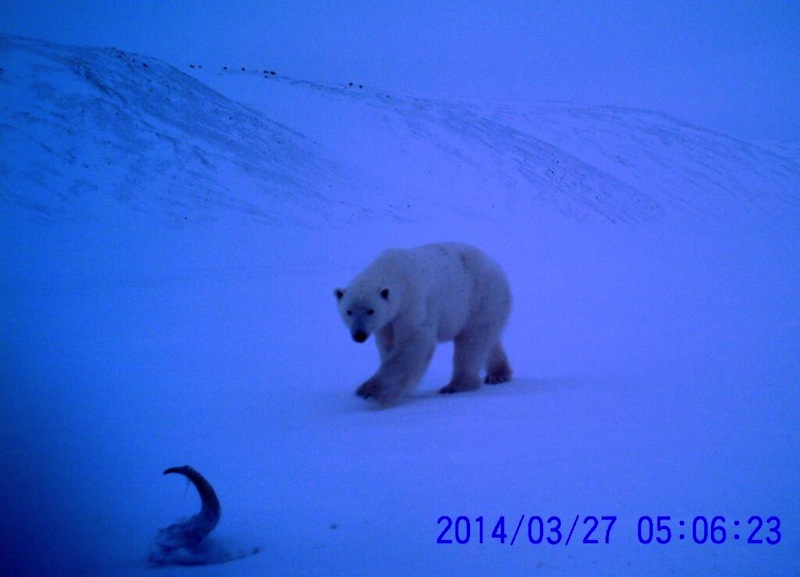Polar Bear Caught on Camera with Eerie Musk Ox Horn (Photo)

In the blue light of the Russian Arctic, scientists captured a rare photo of a polar bear approaching a musk ox carcass Thursday (March 27).
Joel Berger, a senior scientist with the Wildlife Conservation Society and chair of wildlife biology at the University of Montana, posted the picture on Twitter from eastern Russia's remote Wrangel Island.
Located 300 miles (483 kilometers) north of the Arctic Circle, Wrangel Island boasts the highest biodiversity in the Arctic, including the biggest population of Pacific walruses and the greatest density of polar bear dens. But this isolated rocky haven is perhaps most famous for its extinct inhabitants. While most woolly mammoths died out in Siberia about 10,000 years ago, dwarf mammoths survived in Wrangel Island until 3,700 years ago. (At that time, the Great Pyramid of Giza had already been built in Egypt and Hammurabi's Code had been etched into stone in Babylon.)
Berger is currently on Wrangel Island with a team of Russian scientists as part of an expedition to study how musk oxen living in this remote refuge compare with those in the warming Alaskan Arctic, Scott Smith, a spokesman for the WCS, told Live Science in an email.
Musk oxen today are only native to Canada and Greenland, but they were once more widespread across the Arctic. Twenty musk oxen were introduced to Wrangel Island in 1975. Today, their population has stabilized at around 900 individuals, according to the National Oceanic and Atmospheric Administration's 2013 Arctic Report Card.
Conservationists have also established populations of musk oxen in Alaska, where the species disappeared by the 1890s. Now, more than 4,200 musk oxen live in five different Alaskan regions, though not all of those populations are growing, NOAA officials say.
"Several factors, including predation by grizzly bears, hunting, access to winter habitats, winters with freezing rain or deep snow, nutritional deficiencies and disease may be affecting recruitment, survival and distribution," the Arctic Report Card reads. "Entire groups of 30-50 animals have died during spring floods, storm surges and lake ice break-up."
Sign up for the Live Science daily newsletter now
Get the world’s most fascinating discoveries delivered straight to your inbox.
Follow Megan Gannon on Twitter and Google+. Follow us @livescience, Facebook & Google+. Original article on Live Science.











